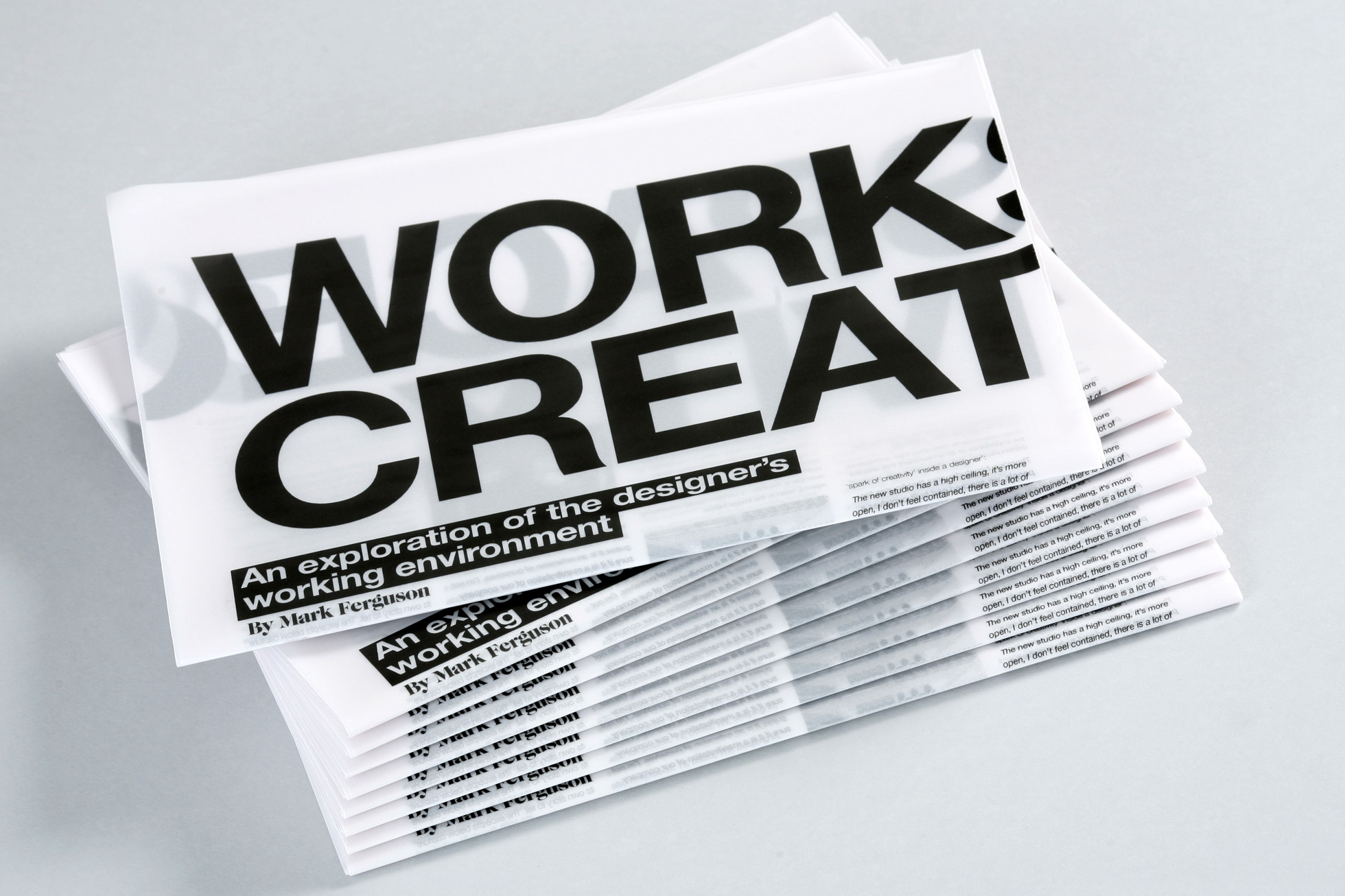Background
When studying for his MA in Visual Communication, Mark undertook(承担) an in-depthinvestigation(调查) into the relationships between working environments and creativity(创造力) within the design industry.
  

 
 BackgroundWhen studying for his MA in Visual Communication, Mark undertook(承担) an in-depthinvestigation(调查) into the relationships between working environments and creativity(创造力) within the design industry. BriefThe aim of the investigation was to explore how workspaces affect the people within them. Does a less inspirational(鼓舞人心的) and creative(创造性的)space have a knock on effect onproductivity(生产力) and is there any way to measure this? Do designers prefer to work in particular types of environments and locations? Does a lack of investment(投资) in workspace equal a lack of investment in attracting andretaining(保持) both clients and employees(雇员)? SolutionIn order to try and identify(确定) some guidingprinciples(原理) or ideas behind the most successful creative workspaces, the study looked at existing literature on the area, and undertookqualitative(定性的) research. For the latter, an emailsurvey(调查) was sent to over twentyagencies(代理) across England. ResultsThe study found that creative organisations(组织)are at the forefront(最前线) of a new wave of thinking about office environments. This thinking may have started off as simple self expression, but led to an understanding that creative and inspiring environments can help produce work of a similar nature. This mailer was designed to present the results of the study. It was sent out nationally to therespondents(被告) who had completedquestionnaires(问卷) for the study. The design is printed on an A0 sheet of trace(追踪) to represent the space and light which the investigation showed designers value in a workspace. The large sheet was folded down to A4 for mailing. |